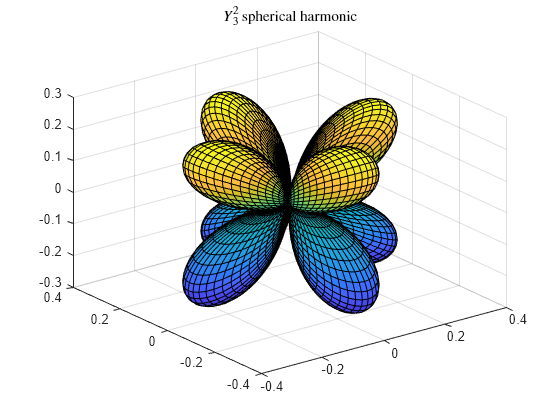legendre
Associated Legendre functions
Description
P = legendre(n,X)n and order m = 0, 1, ..., n evaluated for each
element in X.
P = legendre(n,X,normalization)normalization can be 'unnorm' (default),
'sch', or 'norm'.
Examples
Input Arguments
Output Arguments
Limitations
The values of the unnormalized associated Legendre function overflow the range of
double-precision numbers for n > 150 and the range of single-precision
numbers for n > 28. This overflow results in Inf and
NaN values. For orders larger than these thresholds, consider using the
'sch' or 'norm' normalizations instead.
More About
Algorithms
legendre uses a three-term backward recursion relationship in
m. This recursion is on a version of the Schmidt seminormalized
associated Legendre functions , which are complex spherical harmonics. These functions are related to the
standard Abramowitz and Stegun [1] functions by
They are related to the Schmidt form by
References
[1] Abramowitz, M. and I. A. Stegun, Handbook of Mathematical Functions, Dover Publications, 1965, Ch.8.
[2] Jacobs, J. A., Geomagnetism, Academic Press, 1987, Ch.4.
Extended Capabilities
Version History
Introduced before R2006a
